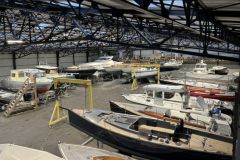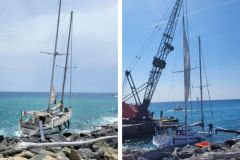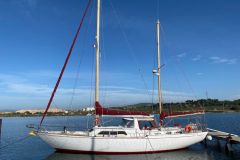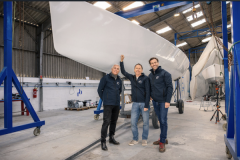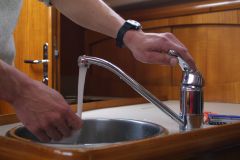The aluminum welding process
In a previous episode, Matt explained his method for determining the shape of the hull of his Duracell sailboat, with a view to fitting a fuel tank under the port aft berth. After drawing it on CAD software, he sent the geometry to one of his patrons, Adventure Marine, for fabrication of the tank. Now it's time to build it.
Matt goes on site to help Greg with the fabrication, and to see how it's done step by step. The various elements have been digitally cut according to plan and folded.
To begin with, all parts are cleaned with acetone and brushed with a wire brush to remove any dirt that might impair the quality of the welds, as aluminium is sensitive to such impurities. The walls are then held in position by the internal partitions with a few weld points, before welding continuous beads. As heat can deform aluminum, it's important to pre-position the parts properly.
The chosen method is the TIG (Tungsten Inert Gas) process, with argon gas surrounding the welding zone and the electric arc to prevent impurities from creeping in.
Reservoir peripherals
Key elements of a fuel tank, the connections are prepared on site from aluminum tubes, cut, deburred and tapped as required. To avoid unpleasant surprises, the 3 fuel connections are of different lengths, the heater connection being shorter, to prevent a forgotten heater from running out of fuel. There's always enough diesel left to get you to the next station.
Back at the boat, Matt tests the tank installation, which turns out to be perfect!




